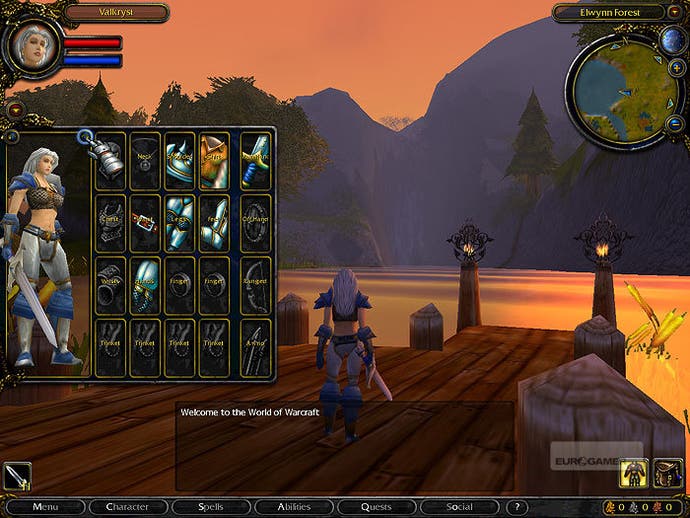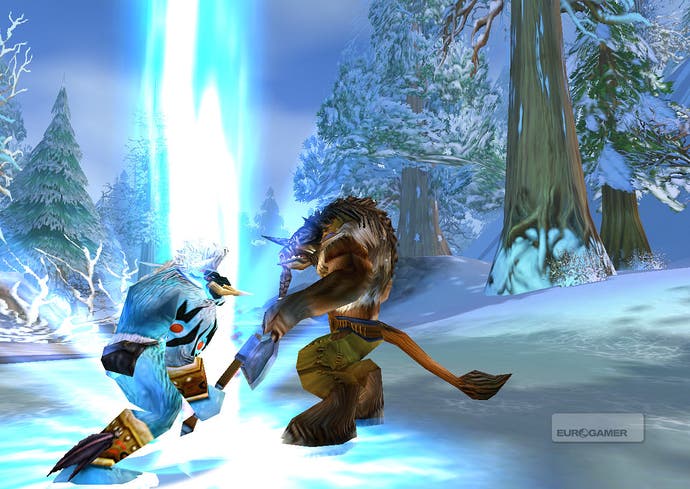The Making of World of Warcraft
Part One: From concept to launch.
Playing EverQuest did more than just inspire Blizzard - it helped with hiring, too. Rob Pardo, vice president of game design, had been involved in running a well-known EverQuest guild called Legacy of Steel alongside another player, called Tigole, who was noted in the community for posting incisive commentary on EverQuest on the guild website. Hired by Blizzard, Tigole - real name Jeff Kaplan - would go on to become one of the lead designers on World of Warcraft, and a key figure in the genesis of the game.
Blizzard would soon learn that playing and talking about EverQuest was a world away from actually building its own MMO.
"We knew that it was a mammoth undertaking, but I think, at the time, we had no clue just how big and complex something like this would be," Metzen says now. "Perhaps it was a little bit of naiveté - 'oh yeah, we can bang out one of those, no big deal' - and certainly as we got into it, we would learn that these things are just... very, very complex in their scope."
Even the initial vision for the game wasn't entirely clear. When work started on World of Warcraft, the team wasn't sure of many things, including when it would be set and what it would look like. Many early concepts were much darker and more gothic than the cartoony look that's now so familiar.
"For a good stretch of the early period of WOW, certain components of the dev team had pitched the idea of placing WOW a hundred years in the future of [Warcraft's world] Azeroth," Metzen reveals. "The wars of orcs and humans were long-done, it was a much darker game. At the end of the day, there was a lot of cool art churned out - and this is a little-known story - but as we stood back and looked at it, we just felt that there was a disconnect. It didn't feel like Azeroth."

Didier takes up the story. "We'd been trying some different things," he says. "We were pushing it a few years ahead, into the future of the world, or rearranging the way that some of the characters would look - and it just wasn't biting for a lot of people. It's like changing Darth Vader from a big scary death knight in the future into a small child. Oh, never mind, sorry, they did that already," he jokes.
"Basically, what happened was that one of the artists on the team just took the Gnoll character from Warcraft III and made it look good at the camera angle that we were using. He kept the same proportions, the same bright colours, the same silhouette with the exaggerated features - and we all looked at that and said, yes, this is what World of Warcraft is going to look like.
"Then he proceeded and did the Kobold, and from then on, that was... Well, it was like, why are we trying to reinvent this thing? Everyone loves Warcraft - let's just make this Warcraft. We don't need any futuristic spin on it, or scary versions of this character, compared to the Warcraft III one. Just make it Warcraft III - that's what the fans are going to love."

The look, which Metzen describes as "equal parts epic and cartoony", is defining - and it allowed a game with what he freely admits "wasn't necessarily the greatest engine you'd ever seen" to achieve a visual style that could survive years in the spotlight. "Any game will age," he says, "but there's something timeless and Disney-ish about WOW's look. That was a funny secondary benefit of really embracing the Warcraft III look - something it bought us which we hadn't anticipated."
As development on World of Warcraft progressed, the team's lack of MMO experience must have started to make itself felt. Blizzard advertised for designers with experience of the field - a relatively small pool of people in the early part of this decade. One of those people was Tom Chilton, who had previously worked on Ultima Online.
Now a lead designer on World of Warcraft, Chilton recalls that while big questions like the art style or the setting may not have been locked down from the outset, certain game philosophies had been there right from day one.
